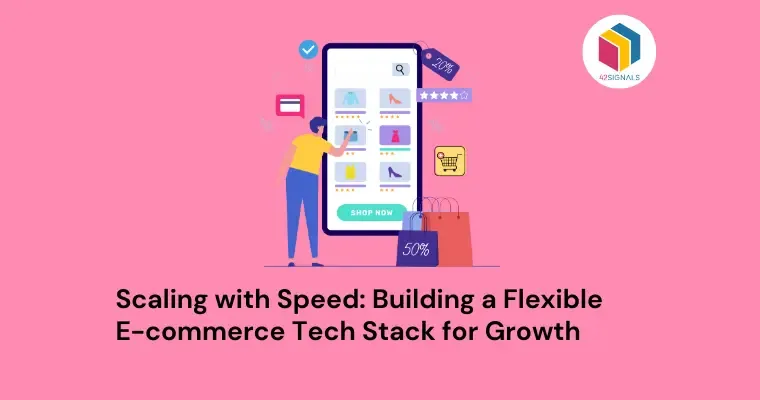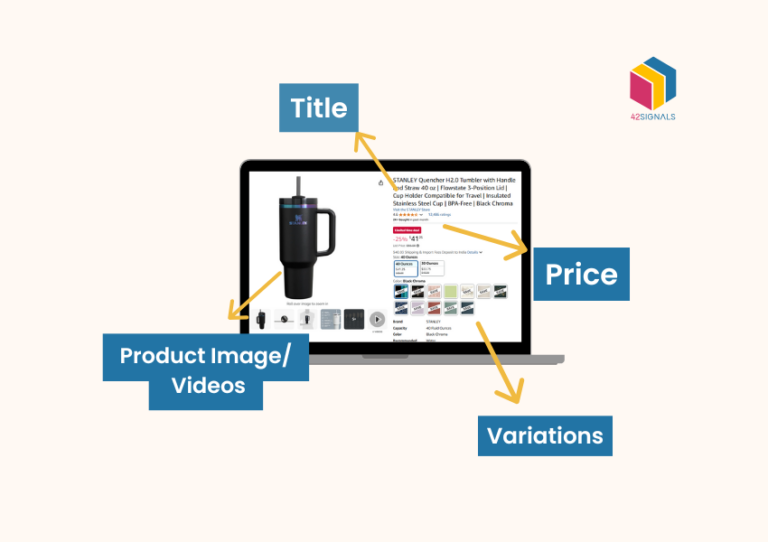As digitization continues to reshape industries globally, businesses embracing e-commerce have entered a new phase marked by intense competition and continuous transformation. Companies are now required to operate within shortened timelines, tighter budgets, and ever-increasing customer expectations. That’s where the eCommerce tech stack becomes very important.
Let’s understand the intricacies of building a scalable e-commerce tech stack. From foundational infrastructure to essential software components, we will walk you through the critical factors and benefits associated with constructing a robust and adaptable system that can support your business through periods of growth and fluctuating demand.
What is a Scalable ECommerce Tech Stack?
A scalable eCommerce tech stack refers to a curated collection of technologies and software solutions that enable an e-commerce business to scale efficiently.
As your business grows, so do its needs—whether it’s increased traffic, expanded inventory, or the necessity for a seamless customer experience.
To manage these evolving demands, your tech stack must be built to grow in tandem with your business, without the need for continuous and costly overhauls.
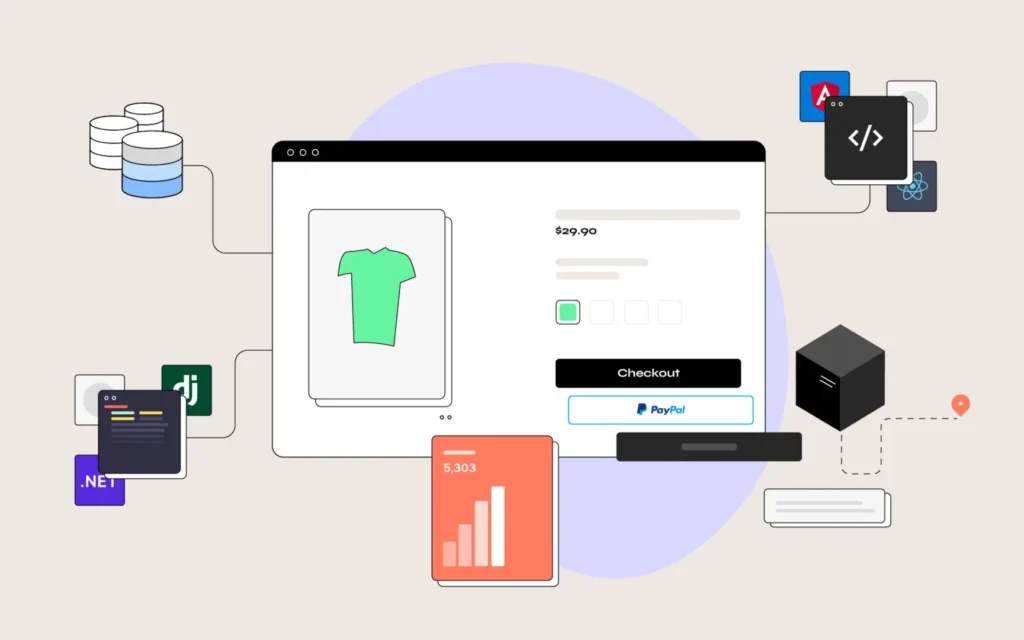
Image Source: Nebulab
Key components of a scalable eCommerce tech stack include:
- Flexible Infrastructure: Your tech stack should be able to adapt to rising traffic and sales volumes without compromising performance.
- Modular Architecture: Scalability is enhanced by modular designs that allow easy addition of features and integrations, ensuring that the system evolves as the business does.
- Performance Optimization: To meet customer expectations, your system needs to be optimized for speed and reliability, even during peak traffic periods.
- Data Scalability: As your customer base grows, so does the amount of data you collect. A scalable system ensures that you can manage increasing data volumes without experiencing slowdowns or errors.
- Security Features: Increased online presence brings increased security risks. A scalable tech stack includes advanced security measures to protect your business and customers, even as your exposure grows.
In essence, a scalable eCommerce tech stack is a strong, adaptable foundation that facilitates business expansion while minimizing disruptions or downtime.
Ways to Build ECommerce Tech Stack
Building an eCommerce tech stack that scales requires a thoughtful approach, involving the selection of appropriate tools and platforms.
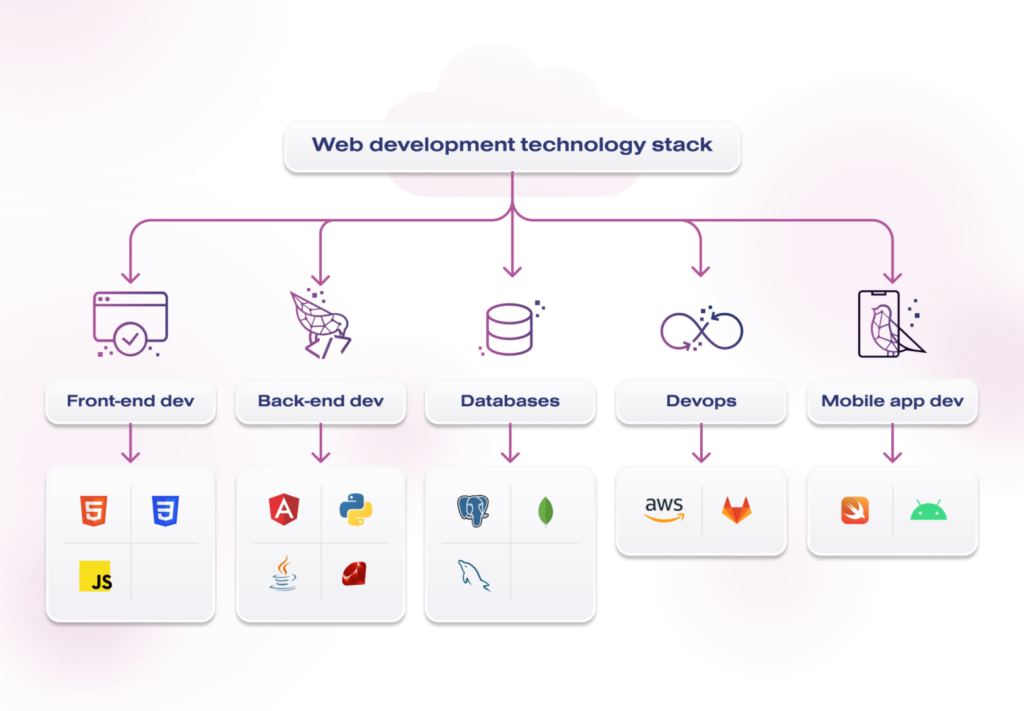
Image Source: Soloway
Below are the essential steps for creating a system that can grow with your business:
- Choose a Scalable E-Commerce Platform: A good e-commerce platform is the backbone of your tech stack. It should handle increasing traffic and sales without buckling under pressure. Platforms like Shopify, Magento, or WooCommerce are popular for their ability to scale alongside business growth. These platforms offer flexible hosting and infrastructure options, along with a broad range of plugins and integrations.
- Implement a Customer Relationship Management (CRM) System: CRM software helps you track customer interactions, manage relationships, and tailor marketing efforts based on customer behavior. A scalable CRM system can grow with your customer base, enabling better customer engagement and retention.
- Integrate Inventory Management Solutions: A scalable inventory management system is critical for e-commerce businesses that handle a growing number of products. These tools ensure accurate stock levels and prevent issues like overselling or stockouts as the business grows.
- Enable Multi-Currency and Multi-Payment Gateways: As your business expands into new markets, your payment system must accommodate multiple currencies and payment methods. This ensures a seamless checkout experience for global customers.
- Use Marketing Automation Tools: To engage customers effectively, scalable marketing tools that automate campaigns, analyze performance, and optimize engagement are essential. This can include email marketing, social media automation, and advanced analytics to track user behavior.
- Ensure Robust Cybersecurity Measures: As e-commerce businesses grow, they become more attractive targets for cybercriminals. Implementing scalable security features, such as two-factor authentication, data encryption, and regular security audits, is crucial to protect your business and customer data.
- Consider Cloud-Based Infrastructure: Cloud-based hosting and services, like Amazon Web Services (AWS) or Microsoft Azure, are highly scalable and can handle surges in traffic and demand. Cloud platforms offer flexibility, reliability, and scalability, allowing your infrastructure to grow with your business without significant upfront costs.
- Select a User-Friendly Content Management System (CMS): A CMS like WordPress or Shopify’s built-in content management tools allows for easy updates and content management without needing a highly technical background. This flexibility is vital for businesses that frequently update product listings, blog posts, or landing pages.
- Connect Social Media Management Tools: Social media is a vital part of any e-commerce strategy. Integrating social media management tools can help businesses manage multiple platforms, schedule posts, and analyze engagement from a single dashboard. This becomes even more important as your audience grows.
- Regularly Review and Upgrade: The ECommerce tech stack is always evolving, so it’s important to periodically review your tech stack and upgrade as necessary. Staying up-to-date ensures that your business remains competitive and continues to meet growing customer expectations.
Factors to Consider When Choosing Tools
Selecting the right tools for your eCommerce tech stack involves evaluating various factors to ensure long-term scalability.
Here are the primary considerations:
- Integration Capabilities: Tools should seamlessly integrate with your existing system, ensuring that data flows smoothly across platforms without unnecessary manual intervention.
- Scalability: The tools you choose should be able to grow with your business. They should handle increased traffic, more transactions, and expanded data without significant disruptions or additional costs.
- Cost-Effectiveness: Scalability doesn’t have to come at an exorbitant cost. Look for solutions that offer good value for money while still delivering the performance you need.
- User-Friendliness: Ensure that your tech stack is easy to use for your team. A system that’s too complicated will slow down processes and decrease productivity.
- Customer Support: The tools you choose should come with reliable customer support. As you scale, any technical issues should be resolved quickly to avoid disruptions in service.
- Security Features: Ensure that your e-commerce tools come equipped with security features to protect your business from cyber threats. This includes data encryption, secure payment processing, and regular updates.
- Vendor Reputation: Opt for tools from reputable vendors who offer continuous updates, improvements, and support. Well-established vendors are more likely to provide reliable services that evolve with industry trends.
- Feature Set: Make sure that the tools you choose align with your specific business needs. For instance, some platforms may offer better analytics tools, while others excel in payment processing or inventory management.
Benefits of a Scalable ECommerce Tech Stack
Building a scalable eCommerce tech stack offers a multitude of benefits:
- Enhanced Flexibility: A scalable system allows your business to respond quickly to market changes, customer needs, and seasonal demand spikes.
- Cost Efficiency: Scalable solutions are adaptable to changing demand, allowing you to avoid overinvesting in infrastructure during slow periods.
- Improved Performance: A well-built tech stack ensures that your website performs optimally even during peak traffic, offering customers a smooth experience that boosts retention and conversion rates.
- Competitive Edge: Businesses that can quickly adapt to trends, new technologies, and customer preferences will always stay ahead of the competition.
- Seamless Integration: Scalable tech stacks easily incorporate new tools and services as your business grows, reducing the need for frequent overhauls.
- Data Management: As your business scales, so does your data. A scalable tech stack enables you to manage and analyze large volumes of data efficiently, providing insights that drive business growth.
- Customer Satisfaction: A seamless, optimized shopping experience keeps customers happy, leading to higher customer loyalty and repeat business.
- Market Expansion: A scalable tech stack allows your business to enter new markets with minimal disruption or additional cost, supporting international growth and multi-channel strategies.
Functions to Build a Tech Stack Around
When building an eCommerce tech stack, it is essential to focus on several key components as a priority:
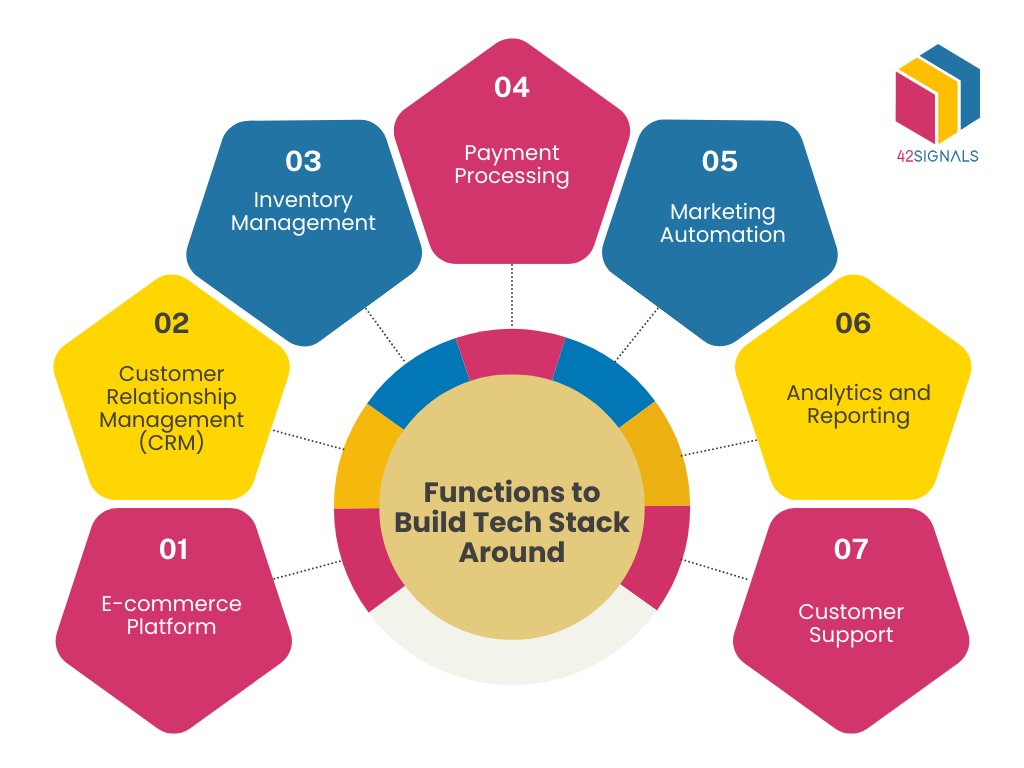
- E-commerce Platform: This is the foundation. Choose a platform that’s scalable, customizable, and integrable with other tools.
- Customer Relationship Management (CRM): To manage customer data, track interactions, and personalize customer experiences.
- Inventory Management: Essential for tracking stock levels, orders, and deliveries in real-time.
- Payment Processing: Secure and reliable payment gateways that support multiple payment methods.
- Marketing Automation: Tools for email marketing, social media management, and campaign tracking to drive sales and engage customers.
- Analytics and Reporting: For data-driven insights into customer behavior, site performance, and business health.
- Customer Support: Solutions like live chat and ticketing systems that ensure excellent customer service as you scale.
Conclusion
By concentrating on developing a flexible, modular, optimized, and secure eCommerce tech stack, businesses lay a resilient groundwork for sustainable growth within the rapidly changing digital marketplace.
For more such insightful articles, visit our e-commerce blogs page.
